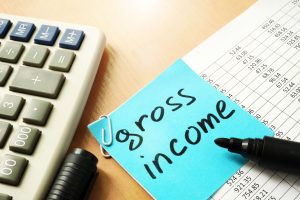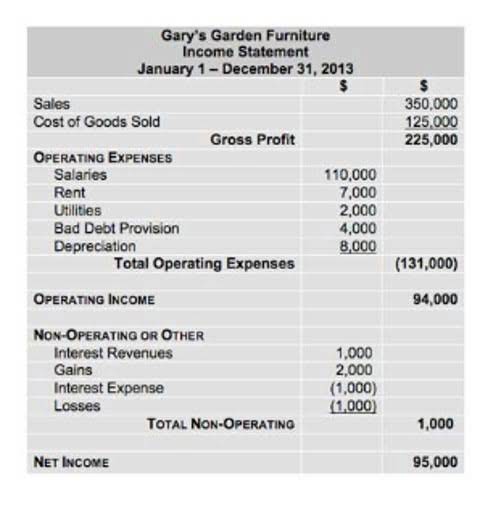
A simple, static share count would not accurately reflect the average capital base over a period where such changes occurred. Weighted average shares outstanding is a nuanced metric that provides a deeper understanding of a company’s financial performance. By Bookkeeping vs. Accounting accounting for changes in the number of shares throughout a reporting period, it offers a more precise measure for calculating EPS and other per-share metrics. For investors and analysts, grasping this concept is essential for making informed decisions based on a company’s financial health and performance. Privately-held companies are not required to report earnings per share, so they do not need to calculate this number.
Video Explanation of Earnings Per Share Formula (EPS)

Whether it’s expansion efforts necessitating more capital or strategic share repurchases, the implications can differ substantially. While WASO provides valuable insights, it should not be the sole metric in assessing a company’s health. It works best in conjunction with other financial indicators to paint a comprehensive picture. For each interval, multiply the number of shares by the fraction of the period it represents, and sum these weighted segments to get the WASO.

EPS and Capital
The weighted average number of shares is determined by taking the number of outstanding shares and multiplying it by the percentage of the reporting period for which that number applies for each period. In other words, the formula takes the number of shares outstanding during each month weighted by the number of months that those shares were outstanding. Basic shares represent the actual number of shares outstanding, while diluted shares include potential shares from convertible securities, options, or warrants. For the weighted average calculation, focus on basic shares unless the diluted figure is specifically required. This distinction is critical for ensuring the accuracy of the EPS calculation, as it directly impacts the denominator in the equation.
Steps to Calculate Weighted Shares
- The weighted average shares outstanding, or the weighted average of outstanding shares, takes into consideration any changes in the number of outstanding shares over a specific reporting period.
- In terms of our assumptions for preferred dividends, we’ll keep the amount fixed at $5mm each year.
- If an acquirer’s EPS increases after it acquires another company, the deal is accretive, and if it decreases, the deal is dilutive.
- This formula sums up the shares outstanding at various points during the period, each weighted by the fraction of time those shares were outstanding.
- Earnings per share is calculated by dividing net income less preferred dividends by the weighted average common shares outstanding.
Thus, we use the weighted average common shares to account for this time difference. With this weighted average number of shares formula, the calculation of a weighted average of outstanding shares can be accurately done for EPS computation. In the case of weighted average shares calculation, a weight given to each share outstanding at a particular point during the period is time proportionate as the time factor is an inherent differentiator. When a company declares a stock split or a stock dividend, the weighted average must be retrospectively adjusted.

Specifically, it incorporates shares that are not currently outstanding but could become outstanding if stock options and other convertible securities were to be exercised. Any stock dividends or splits that occur must be reflected in the calculation of the weighted average number of shares outstanding. Some data sources simplify the calculation by using the number of shares outstanding at the end of a period.

- It ensures that the EPS calculation adjusts for fluctuations in a company’s capital structure and provides a fair basis for comparing profitability across time and companies.
- It adjusts for the timing of share issuances and repurchases, ensuring that Earnings Per Share accurately reflects the company’s performance on a per-share basis.
- Regulatory frameworks, such as SEC Rule 10b-18, outline conditions for executing buybacks, helping companies avoid inflating EPS through reductions in share count.
- Here, apart from its profit factor, its earnings can also be affected by the shares outstanding, which is subject to change over time due to multiple factors.
- Earnings Per Share (EPS) is one of the most important financial metrics affected by the weighted average of outstanding shares.
This number is significantly important for public companies as it constitutes the basis for computing important financial metrics like earnings per share (EPS). Since private companies are not legally required to report EPS on their income statement, they don’t need to calculate the weighted average number of shares outstanding. However, the weighted average shares outstanding accounts for the timing of these changes, resulting in 11,250 shares.
Basic Earnings Per Share (EPS)
- The earnings per share formula is used in other formulas such as the P/E ratio formula and, on occasion, stock valuation.
- We provide broker reviews and ratings to help users find a suitable broker according to their own needs.
- If a company issues stock dividend or exercises a stock split after the end of its reporting period but before the issuance of financial statements to stakeholders, it must restate its common shares for the whole year.
- The total number of shares outstanding directly influences a company’s market capitalization, essentially indicating its total market value.
- The formula for calculating the shares outstanding consists of subtracting the shares repurchased from the total shares issued to date.
- Market capitalization is calculated by multiplying the company’s share price by its shares outstanding.
Since the denominator is greater in the basic EPS, the diluted EPS is always less than the basic EPS from the weighted average number of common shares outstanding formula higher share count. The number of shares outstanding of a company can be found in its quarterly or annual filings (10-Qs or 10-Ks). Shares Outstanding represent all of the units of ownership issued by a company, excluding any shares repurchased by the issuer (i.e. treasury stock).
5.6.2 Partial redemption or induced conversion on diluted EPS—after adoption of ASU 2020-06
If an acquirer’s EPS increases after it acquires another company, the deal is accretive, and if it decreases, the deal is dilutive. If you want to value companies, you should focus on metrics that are less subject to manipulation, such as EBITDA, EBITDA minus CapEx, Free Cash Flow, or Unlevered Free Cash Flow. 2) Stock Repurchases – When companies have no other ideas for http://www.accurateaccountingservices.com.au/bookkeeping-2/kpmg-debuts-spark-accounting-and-tax-technology/ their huge Cash balances, they love to repurchase stock. Doing this lets them artificially boost their EPS by reducing the “Shares Outstanding” in the denominator – even if their core business has not grown at all. 1) Accounting Gimmicks – For example, companies could “sandbag” their Net Income in one period by increasing their provisions or allowances or shifting around expenses. Then, the company will look better in the future because it’s starting from a lower baseline EPS.
Expenses Will Cause Retained Earnings to Decrease. Here’s Why

The net impact that changes in a company’s net income and the number of common shares have on basic earnings per share (EPS) for a given period can be observed from our modeling exercise. To reiterate, the formula for calculating basic EPS involves dividing net income by the weighted average number of common shares outstanding. Since the number of common shares outstanding may change over the year, the weighted average calculates EPS.
Download the Earnings per Share Formula Template
Please note in the case of Colgate, the number of shares that increase due to stock options and restricted stock units is 9.1 million for 2014. A company that announces a 2-1 stock split as of a certain date doubles its number of shares outstanding on that date. If that event occurs on, say, December 15th of the year, it can distort the company’s apparent number of shares outstanding for the year.